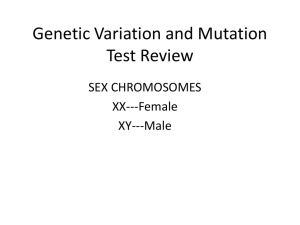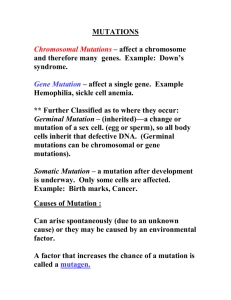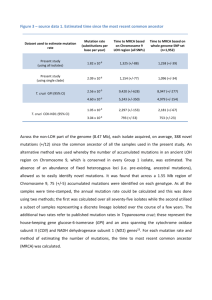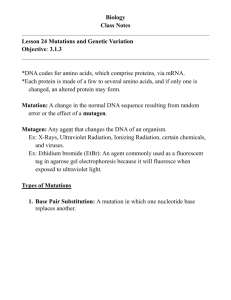MUTATIONS
advertisement
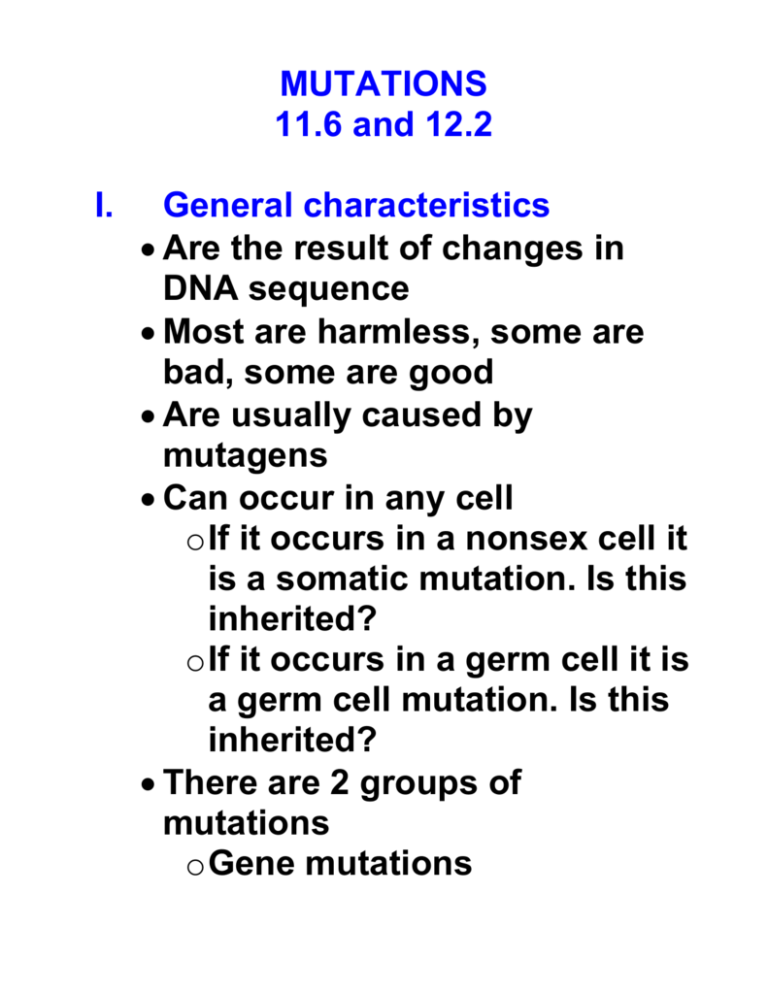
MUTATIONS 11.6 and 12.2 I. General characteristics Are the result of changes in DNA sequence Most are harmless, some are bad, some are good Are usually caused by mutagens Can occur in any cell o If it occurs in a nonsex cell it is a somatic mutation. Is this inherited? o If it occurs in a germ cell it is a germ cell mutation. Is this inherited? There are 2 groups of mutations o Gene mutations o Chromosomal mutations II. Gene Mutations A change in DNA structure due to changes in the nucleotide sequence of DNA Affect involves only 1 gene Types of gene mutations: A. Point mutation (base substitution) Only one nucleotide is changed Possible effects: o Silent mutation: change in the nucleotide doesn’t change the protein sequence. Why? o missense mutation: change in the nucleotide alters the amino acid coded for o nonsense mutation: a codon that codes for an amino acid is altered to a stop codon B. Frameshift mutation: a nucleotide is deleted or inserted altering the entire protein http://highered.mcgrawhill.com/sites/0072556781/student_vi ew0/chapter11/animation_quiz_3.htm l http://highered.mcgrawhill.com/sites/0072556781/student_vi ew0/chapter11/animation_quiz_4.htm l https://www.youtube.com/watch?v=k p0esidDr-c III. Chromosomal Mutations A change in the structure or number of chromosomes A. Change in chromosome structure Deletion mutation: part of a chromosome is deleted Ex: Fragile X syndrome Duplication mutation: part of a chromosome is duplicated Inversion mutation: part of a chromosome is inverted Translocation: part of one chromosome is moved to another. THIS IS NOT CROSSOVER http://highered.mcgrawhill.com/sites/0070960526/student_vi ew0/chapter18/animation_quiz_1.htm l https://www.youtube.com/watch?v=F gMKGIED4Yo B. Change in chromosome number Nondisjunction: failure of homologous chromosomes or sister chromatids to separate during meiosis results in an organism with too few or too many chromosomes http://www.sumanasinc.com/webcon tent/animations/content/mistakesmei osis/mistakesmeiosis.swf





